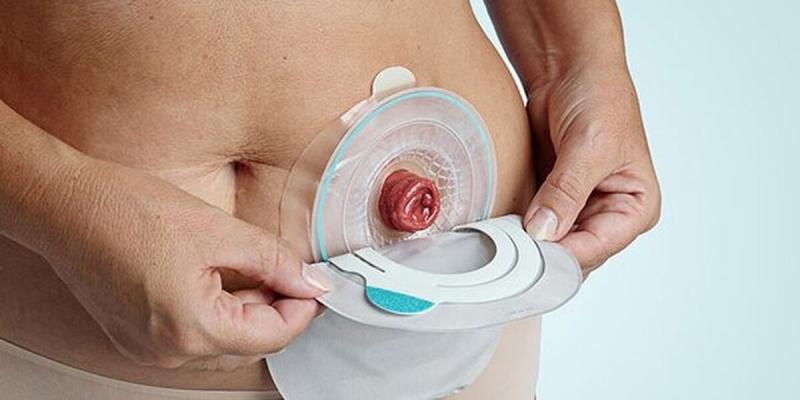Colostomy bags have become indispensable medical devices for individuals who undergo colostomy surgery, a procedure that creates an opening in the abdominal wall to divert waste from the colon. These bags collect fecal matter, allowing patients to manage their bodily functions post-surgery comfortably and discreetly. Over the years, colostomy bags have evolved significantly, incorporating advanced materials and features to enhance user experience and healthcare outcomes.
Exploring Different Types of Colostomy Bags and Their Applications
Colostomy Bags vary in design and functionality depending on patient needs, stoma location, and lifestyle preferences. The most common types include one-piece and two-piece systems. One-piece colostomy bags combine the adhesive base plate and the bag into a single unit, emphasizing simplicity and ease of use. Conversely, two-piece systems separate the adhesive wafer and the bag, allowing patients to replace the bag without detaching the base plate. This option is preferred by users seeking more flexibility and convenience.
Additionally, colostomy bags are available in drainable and closed-end models. Drainable colostomy bags enable patients to empty waste multiple times before replacement, making them ideal for frequent use. Closed-end bags are designed for single-use and are typically discarded after filling. These varieties ensure that patients with varying output levels and stoma conditions can select a product tailored to their medical and practical requirements.
The materials used in colostomy bags have also improved. Modern bags utilize odor-blocking filters, skin-friendly adhesives, and durable, lightweight plastics that reduce discomfort and social anxiety linked to leaks or odors. The breathable wafers protect sensitive skin around the stoma while maintaining a strong seal, reducing irritation risk.
Trends Driving Innovation in Colostomy Bags Technology
The colostomy bag has witnessed substantial innovations driven by advances in medical technology, materials science, and increasing demand for patient-centric solutions. A significant trend includes the integration of hydrocolloid wafers, which offer enhanced adhesion and skin protection. These wafers conform to body contours and reposition safely without damaging skin, improving the comfort levels for users.
In addition to material advancements, there has been a focus on improving the aesthetic design of colostomy bags. Manufacturers are incorporating slimmer profiles and discreet colors to minimize visibility under clothing, addressing patients’ emotional and psychological well-being. The development of customizable sizes and shapes has further refined the fit for various stoma locations and sizes.
Another technological leap is in the inclusion of smart ostomy products, integrating sensors that monitor the bag’s fullness or detect leaks early. While still an emerging segment, these innovations aim to enhance autonomy for users and reduce hospital visits caused by complications.
Supply chain enhancements and global distribution networks are also making high-quality colostomy bags more accessible worldwide. These improvements reflect a competitive shaped by increasing awareness and rising numbers of colostomy surgeries globally.
How to Choose and Purchase Colostomy Bags Based on User Needs
Selecting the most suitable colostomy bag involves understanding personal medical requirements, lifestyle considerations, and compatibility with skin conditions. Key factors influencing purchase decisions include the stoma type (colon, ileostomy, urostomy), bag capacity, wear duration, comfort, odor control features, and price.
Patients often consult healthcare professionals for initial product guidance, but many gradually explore different brands and styles to find the optimal fit. Moreover, modern colostomy bag options come with user manuals and instructional videos to ease the adaptation process, making purchasing decisions more informed.
Online and offline retail places offer a variety of colostomy bags with detailed product specifications and customer reviews. Some suppliers provide trial packs, enabling users to test different products before committing to a full purchase. Payment flexibility, return policies, and availability of accessories like adhesive removers and skin barrier creams also contribute to purchasing ease.
Advanced purchases can include custom-fit colostomy bags, often requiring consultation with ostomy nurses or specialists. Insurance and reimbursement policies further impact buying habits, emphasizing the need for customers to be well-informed about financial support options related to colostomy supplies.
Commercial Factors Impacting Colostomy Bag and Demand Dynamics
The for colostomy bags is influenced by several commercial drivers, including rising prevalence of colorectal cancer, inflammatory bowel disease, and trauma cases requiring colostomy surgeries. The expanding geriatric population also contributes to growing demand, as aging increases the likelihood of stoma formation.
Healthcare expenditures and insurance coverage play crucial roles in accessibility to high-quality ostomy products. Several manufacturers compete by offering a wide range of product prices and service agreements, allowing healthcare facilities and individual consumers to find economical yet efficient options.
Distribution network effectiveness, brand reputation, and after-sales support are essential commercial aspects shaping consumer loyalty and penetration. Companies heavily invest in educational initiatives and partnerships with healthcare professionals to raise awareness of advanced ostomy care solutions.
Regional development disparities and regulatory approvals affect product availability and pricing structures worldwide, with developed s often showcasing higher adoption rates of innovative colostomy bags. Emerging economies present promising growth potential as healthcare infrastructure evolves and patient access improves.
Get This Report in Japanese Language -人工肛門バッグ
Get This Report in Korean Language - 인공항문 주머니
Read More Articles Related to this Industry –
Nanofiber Applications in Medical Devices: Revolutionizing Healthcare
Camera Modules in Medical Devices: Revolutionizing Diagnostics and Treatment
About Author:
Priya Pandey is a dynamic and passionate editor with over three years of expertise in content editing and proofreading. Holding a bachelor's degree in biotechnology, Priya has a knack for making the content engaging. Her diverse portfolio includes editing documents across different industries, including food and beverages, information and technology, healthcare, chemical and materials, etc. Priya's meticulous attention to detail and commitment to excellence make her an invaluable asset in the world of content creation and refinement.
(LinkedIn- https://www.linkedin.com/in/priya-pandey-8417a8173/)
